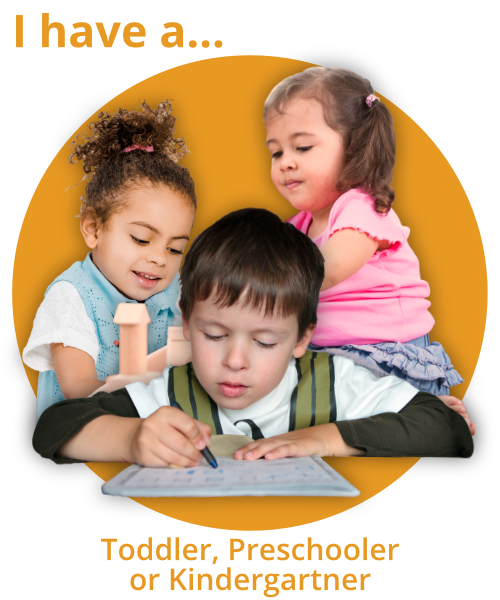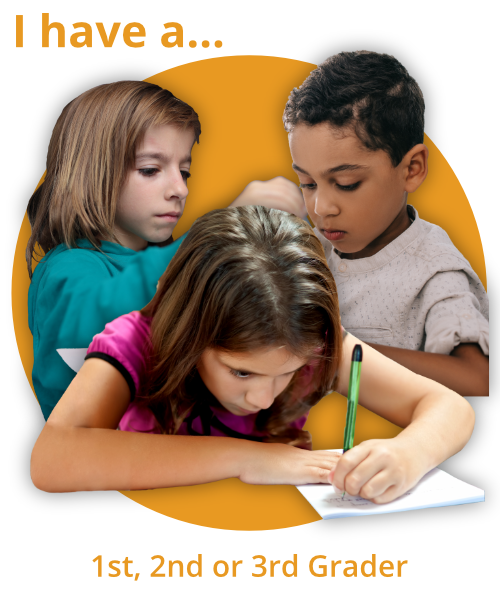Nature Journaling
I'm Aubrey Hargis, Montessorian and mom of two. I'm also a homeschooling parent, and we have been on this learn-at-home journey for the past 13 years. That's right - I have a 10yo and a 13yo now and I've never regretted being my children's primary educator. There's so much for them to learn in the great outdoors - and me, too…
because education is a journey we take with our children, and the opportunities for learning start over every day.
Hey Sweet Friend
Welcome back to the podcast! I recorded this podcast episode in the closet at my Mother-in-Law’s house. What a podcasting rite of passage. If you’re new here, welcome! We’re going to get into nature journaling today: what it is, what your child can learn from it, and how you can incorporate it into your Montessori Homeschool.
But first, I want to remind you: anyone can homeschool their children. You do NOT need to be a trained teacher to be able to homeschool your child. You can just be yourself, and teach them what you are learning. Our learning may be more abstract--but the general process is the same! We become interested in something; we pursue more information about the topic; we follow the interest until it is sated. We don’t have to show our children that we know every answer--we just have to model the curiosity and the methods that help us find the answers to our questions. Inquiry is so valuable!
Meet Valerie
Each week, I like to feature someone who is a part of our Child of the Redwoods community! The participants in this community are such a huge part of what makes it special. This week, we’re sharing advice and inspiration from Homeschool of the Redwoods Primary alumna and Constellation member Valerie, Montessori Mom of 1!
What is a Nature Journal?
Well, a nature journal can be super, super simple. It's very common in the Charlotte Mason homeschooling community, but it's not exclusive to Charlotte Mason. It is just a learning tool that anyone can use at home or in the classroom, to help children to keep track of what they observe in nature, and to get more in tune with their learning as they explore the great outdoors. It can help them connect in a different way with what they are learning in botany, zoology, and earth sciences!
How Do You Nature Journal?
You literally just go outside, you observe some nature, and you either come back to your nature journal and draw or bring that nature journal outside with you. You draw whatever you see: a leaf, a berry, a bird, or some part of the earth...whatever it is, you just draw it. Then, you label the object or creature and can scribble in some notes about what you saw. This might involve a little bit of research! You might observe a beautiful blue bird, and you might question: was it a bluebird? A Blue Jay? A Scrub jay? You can note: we didn't know what this bird was, but eventually we looked it up and found it, and now I know what scrub-jays look like! In this way, the journal can help serve to refresh your memory about names and discoveries which are new to you!
You don’t have to be outside to nature journal: it can just be you and your child are learning about nature at home as usual. You can look up more information on something your child is interested in, draw a picture of what that thing is and then write about it. It’s okay to keep it simple!
Finding What Works for You
Nature journaling can be overly romanticized, especially in the homeschooling community. I personally found it very intimidating! When I first heard of this concept, I started seeing all these nature journals, because a lot of people are very, very good artists. I felt super intimidated because I can't draw that well.
After experiencing it with my own children, I realized it's really not about how good your art is or about how exactly you replicate what you saw. It's about committing what you saw, to your memory. It's about getting your hands to create a representation of what you saw in a way that it gets into your memory, and you really solidify that piece of learning. You are learning to look at the details that help you identify and better understand whatever it is you are illustrating! The turn of a bird’s beak, the asymmetrical margins of a leaf.
It can be as simple as that: go outside with some paper or a little notepad and draw what you see. And then write down some words. Maybe you label it! You can label the parts of what you are drawing, or you can write down the scientific name of the thing that you're drawing. You could do some free writing, or a little actual journaling, and write about your experience: “We went outside and saw the most amazing thing….” and then you're just writing about it. Describe it using all these juicy adjectives in your language. If you're modeling this for your child, they are going to be having this really enriching lesson. You're not even going to realize that you're teaching them a lesson, but every time you do nature journaling with your child, you will actually be teaching them a little lesson about writing, drawing, and observing details.
Other Opportunities for Discovery
There are lots of ways that you can dig deeper or explore in new ways. I always recommend with young children that you start by using your five senses. Go outside with your blank journals,
And then go through the process together or experiencing the environment with all five senses. What do we hear? What do we smell? What do we see? You might not have something edible, but you might be able to taste the heat in the air, or the rain or fog rolling in. Sensorial is the concrete foundation that gives us the input we need to better understand ALL the qualities of the things in the world around us.
So don't just expect to go out there and draw something or write something, have that concrete experience first. Put that journal down, and or keep it in your backpack and go and touch things. smell things, feel the smoothness or the roughness. If you do this as a little ritual before you do this nature journaling, you just pause and you breathe, and you smell and you just sit...it's going to help your child to tune in to their environments. After that, you're going to select something to draw or write about.
Make sure as you draw that you’re modeling imperfection for your child. Notice the mistakes you make and share how you embrace them to fix them! Use your eraser to erase and try again. This is a great opportunity to model friendliness with error and for helping the child embrace imperfection, too. Perfect is not the heart of this exercise!
Ideal Materials
I prefer bringing a variety of writing utensils and art materials. Usually, in our little backpack, we will bring colored pencils, a set of crayons, a travel kit of watercolors, maybe a small set of markers. Charcoal also is something fun and different that you could bring, or soft graphite pencils, oil pastels, or cray-pas are also a fun medium to use. Chalk can be extra fun with the addition of black paper.
Paper can be in a notebook or not! If everybody has their own notebook that's sometimes fun. I just tend to grab a bunch of paper and stick it inside my little backpack. I have a half-size or maybe even a quarter-size backpack that we use for this.
Other Things to Include in Your Journals
In addition to whatever you choose to draw, you can incorporate pieces of nature where it is appropriate. We have done leaf and bark rubbings before; we have gathered flowers and pressed them. We try to make sure we are sensible about what we are picking and participate in honorable harvesting. You can add pressed items to your nature journal later; you can do that with leaves, too. Pressing also provides a great opportunity to do the parts of a plant lesson inside your notebook! You can collect and label seeds, as well.
A lot of people like to write poetry inside their nature journal if that’s something you enjoy! Prose is fine, too. For older children, you can do creative writing, such as from the point of view of that animal or of the plant. Often we would learn something in nature, and then come home and my children would dictate to me while I typed a long story, sometimes even chapter books about whatever characters they created based on that animal that we saw.
You can also track the animals you’ve seen in your journal! You might like to make some tally marks of animals that you have seen or represent them in other ways. There are a lot of ways you can do this to incorporate math, but generally: if you saw five raccoons on your journey, then you would come back and you would add five little tally marks to the raccoon area of the nature journal! You might have a section for each of the local animals you see, adding a tally each time you have an encounter.
A lot of people like to add quotes to a nature journal, so here is one that I love from Florence Augusta Marion Bailey, who is an ornithologist. She wrote, “Cultivate a philosophic spirit, be content to sit and listen to the voices of the marsh. Let the fascinating mysterious, bewildering voices encompass you and hold your peace.”
And I think that is the feeling I would want every child to feel sometime while they're out and about in nature.
The Benefits of Time Outside and Nature Journaling
When I go out into nature, I get to be part of a space that is bigger than I am. All my worries kind of go away when I'm out there. Walking around in nature, whether I'm on the prairie like I am here in Texas today, or whether I'm in San Francisco in the middle of the woods... I always feel like something else is out there that is so much bigger than myself. It helps me to put things in perspective and to hold my peace.
Your children are going to be practicing their fine motor skills. Through all that drawing and writing, they're going to be expressing themselves as an artist and learning how to make mistakes, and how to pay attention to detail. They're going to be practicing some writing, and little ones, you can even have them copy your writing! Let them help you sound it out and then copy what you transcribe for them. Older children might be practicing independently, using the journal to hone their penmanship, or try something new like calligraphy!
You are also teaching your children how to observe. You are helping them lengthen their concentration, you are allowing them to focus, and you are giving this lifelong gift of appreciating nature. Not just appreciating, but better understanding how to protect it as well! We've only got one Earth, and we need to feel like we are the protectors of this earth.
In Closing
I’m going to leave you with a quote from Richard Louv, from “The Last Child in the Woods: Saving our Children from Nature-Deficit Disorder”. He says: “Passion is lifted from the earth itself by the muddy hands of the young. It travels along grass-stained sleeves to the heart. If we're going to save environmentalism and the environment, we must also save an endangered indicator species, the child in nature.”


